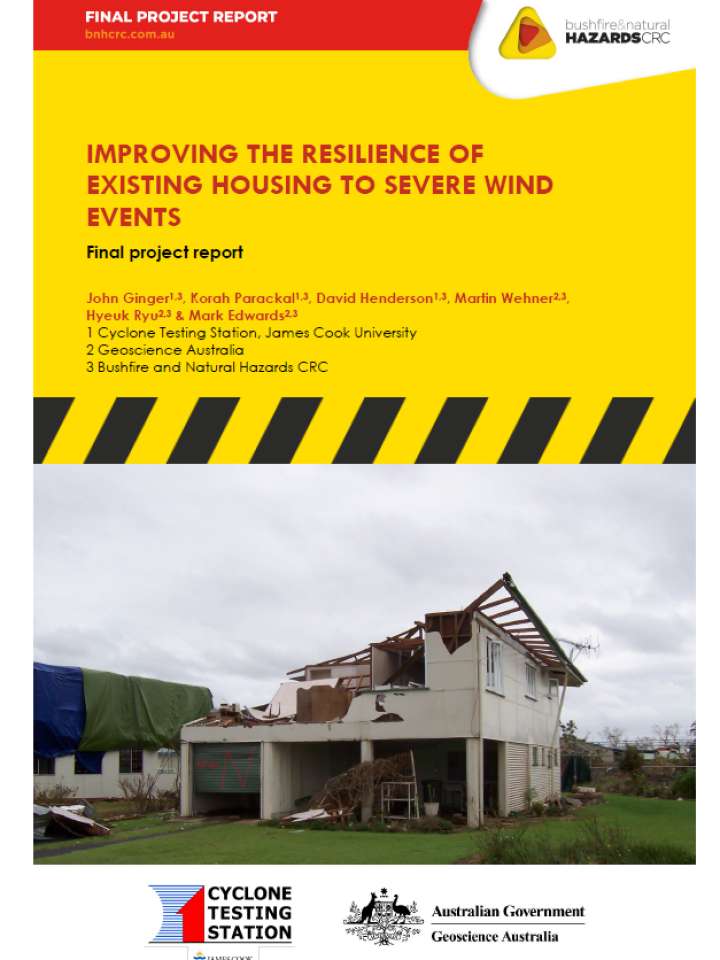Improving the resilience of existing housing to severe wind events
The primary objective of this study was to identify vulnerable legacy house types across Australia and develop cost-effective retrofits for mitigating damage during windstorms. These evidence-based strategies will (a) aid policy formulation and decision making by Government and industry, and (b) provide guidelines detailing various options and benefits to homeowners and the industry for retrofitting typical at-risk houses in Australia. The main aims were to:
- Categorise houses into types based on building features that influence windstorm vulnerability using Geoscience Australia and CTS survey data. Following this, define a suite of ten (10) typical, representative house types across cyclonic and non-cyclonic regions of Australia.
- Develop the software VAWS (available at https://github.com/GeoscienceAustralia/vaws) to quantify the vulnerability of the houses before and after retrofits. Define a series of practical retrofit options for each house type and quantify the benefit-cost ratio of each option. Validate these outputs from available data and empirical/expert opinion.
- Produce Internet-based guidelines (www.weatherthestorm.com.au) and enable utilisation by involving end-users and stakeholders (i.e. homeowners, builders, regulators, insurers).
This report presents an overview of the research approach used for this project including the selection of house types, the development of the VAWS software and the Internet-based guidelines. A case study is presented of the vulnerability and benefit cost assessment of one of the selected house types, with the complete set of results presented in the Appendices. These results show that tile roofed houses in cyclonic regions of Australia benefit the most from retrofitting for severe wind events. The benefit-cost ratios for these tile roof houses and other house types are expected to improve when accounting for intangible costs, which are currently not included in the analyses presented in this report. In addition, examples of the impacts and utilisation of this project including the Queensland Government Housing Resilience Program are also presented.
Explore further
